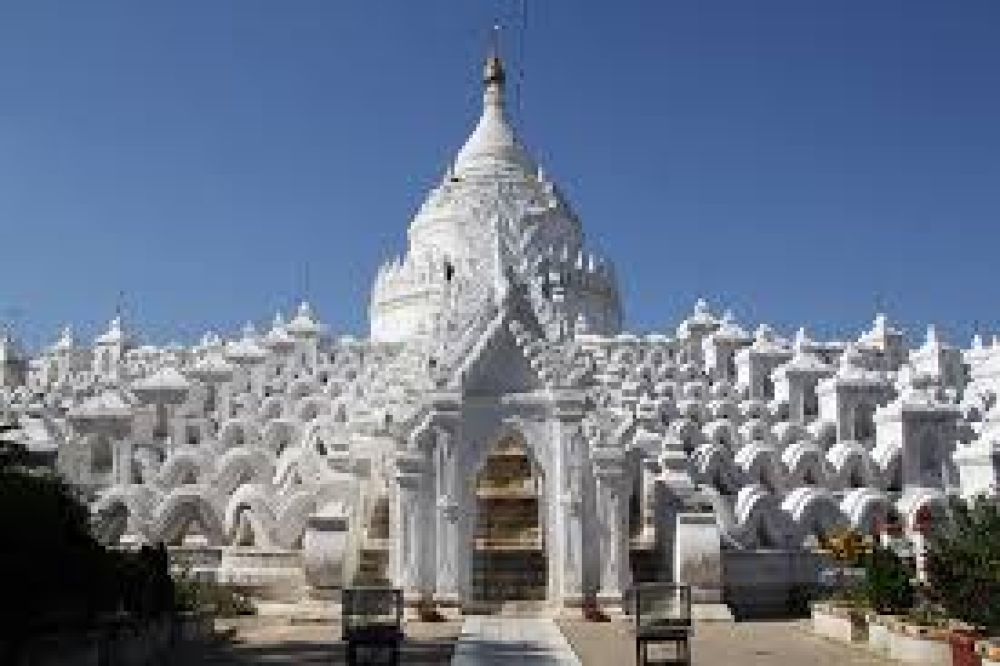

The Hsinbyume Pagoda is a stunning architectural marvel located in Mingun, approximately 10 kilometers northwest of Mandalay in Myanmar. This alluring white structure has a history that stretches back to the early 19th century and has grown to become an iconic symbol in the region and a must-visit destination for tourists from around the globe.
Constructed in 1816, the Hsinbyume Pagoda was built by Prince Bagyidaw before he became King of Burma. It is dedicated to the memory of his first consort and cousin, Princess Hsinbyume (or Sinbyume), which translates to 'White Elephant Princess.' The design is symbolic, representing the Sulamani Pagoda that, according to the Buddhist cosmology, stands atop Mount Meru, the center of the universe.
The Hsinbyume Pagoda's distinctive architectural style sets it apart from other Burmese pagodas. The structure is based on seven concentric terraces that represent the seven mountain ranges surrounding Mount Meru. These levels are decorated with various mythological figures, and visitors can walk around them, ascending in a spiral pattern to the top.
For many years, Myanmar remained a relatively hidden gem due to its political circumstances, which limited tourism. However, the country began opening up in the early 1990s, which led to an increased interest from the international community. The Hsinbyume Pagoda has seen a steady rise in tourists since then, entranced by its mythological representations and striking visual presence beside the vast Irrawaddy River.
In recent years, sustainable and responsible tourism in Myanmar has gained momentum, with an emphasis on preserving the unique cultural heritage and natural beauty of the nation. As Mandalay and its neighboring areas, including Mingun, continue to develop infrastructure, the Hsinbyume Pagoda stands as a focal point for attracting visitors who seek both historical enrichment and spiritual reflection.
Furthermore, due to advancements in social media and online marketing, the Hsinbyume Pagoda has seen a surge in popularity as an Instagram-worthy location, drawing a new generation of digital-savvy travelers.
For those planning a visit to the Hsinbyume Pagoda, it is essential to respect the local customs and religious practices. Travelers should dress modestly and conduct themselves appropriately within this sacred space.
To get the most out of a visit, many tourists choose guided tours that offer insight into the pagoda's rich lore and place within Burmese culture. The best time to visit is during the dry season, from November to February, when the weather is cooler and more suitable for exploring.
The Hsinbyume Pagoda remains a testament to Myanmar's deep-rooted history and cultural splendor. It continues to captivate the hearts of those who tread its symbolic terraces, leaving a lasting impression that transcends the physical realm and delves into the spiritual and mystical past of Burma.